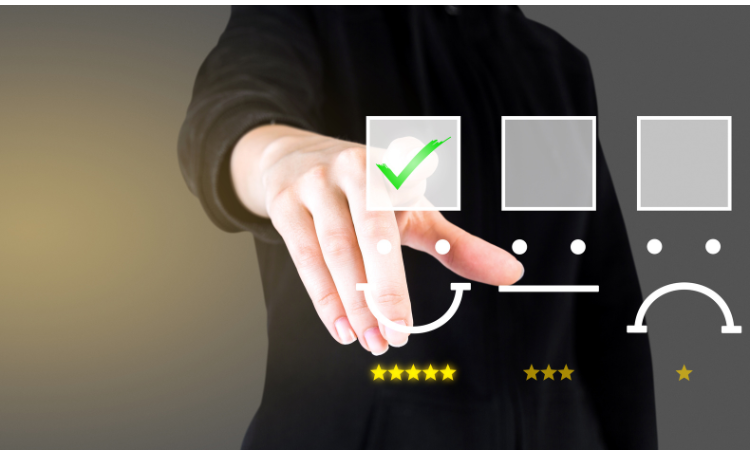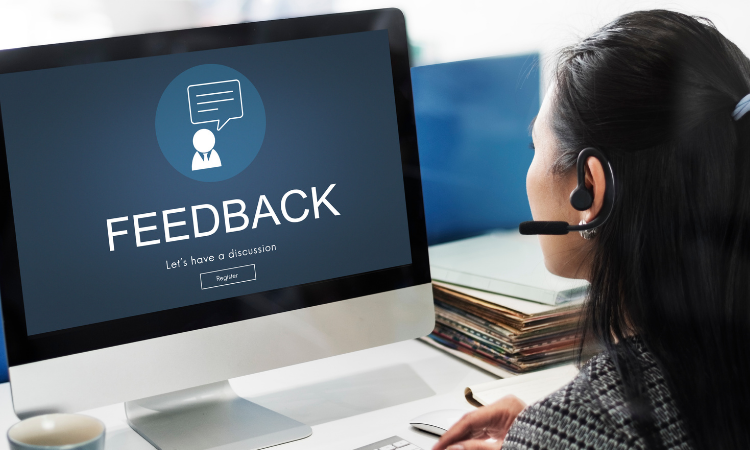In today's competitive market, customer experience (CX) has become a critical differentiator for businesses. While much of the focus often falls on B2C (business-to-consumer) interactions, the significance of B2B (business-to-business) customer experience cannot be overlooked. According to a study by Salesforce, 80% of B2B customers now expect the same personalized experience as when they are buying for themselves. B2B relationships are inherently more complex, involving longer sales cycles, multiple decision-makers, and higher stakes. This complexity makes it even more crucial for you to prioritize and enhance your B2B customer experience.
This blog delves into the intricacies of B2B customer experience, highlighting its importance and how it differs from B2C CX. We'll explore the B2B buyer journey, identify the key components of effective B2B CX, and discuss the prominent challenges you might face in this domain. Additionally, we'll provide practical solutions to enhance your B2B customer experience, share examples of companies that have excelled in this area, and offer strategies for crafting a robust B2B CX approach. Finally, we'll emphasize the role of customer feedback in shaping your successful CX strategies.
Take, for example, the case of IBM. By focusing on personalized, data-driven interactions and fostering strong client relationships, IBM significantly improved their client satisfaction scores and achieved a higher rate of contract renewals. By understanding and addressing the unique challenges of B2B customer experience, you can foster stronger relationships, drive loyalty, and achieve sustained growth. Join us as we explore everything you need to know about overcoming B2B customer experience challenges and implementing solutions that work for your business.
TL;DR
-
B2B customer experience (CX) involves managing complex, multi-layered relationships with longer sales cycles and multiple decision-makers, requiring personalized and consistent support.
-
Investing in B2B CX is crucial for customer retention, revenue growth, and competitive advantage, with satisfied customers more likely to remain loyal and recommend your services.
-
Key challenges in B2B CX include long sales cycles, multiple decision-makers, high expectations for personalization, and difficulty measuring CX.
-
Solutions include leveraging technology, fostering a customer-centric culture, training employees, and using data-driven insights to personalize interactions.
-
Successful companies like IBM, Cisco, Adobe, Salesforce, and SAP have excelled in B2B CX by leveraging data analytics, personalizing interactions, empowering employees, and implementing omnichannel strategies.
-
Zonka Feedback offers powerful features for real-time feedback collection and analysis to enhance your B2B CX. It also provides a free trial for 14 days.
Elevate CX with Customer Feedback🔥
Collect real-time, in-moment feedback at all touchpoints in customer journey and leverage feedback insights to transform customer experience.

What is B2B Customer Experience?
B2B customer experience (CX) refers to the collective interactions and engagements that a business customer has with your company throughout their entire journey. Unlike B2C CX, where the focus is primarily on individual consumers, B2B CX involves complex, multi-layered relationships between businesses. These relationships are often long-term and require a deep understanding of your customers' unique needs and expectations.
Differences Between B2B and B2C CX
Let us look at the difference between B2B and B2C customer experience.
-
Relationship Dynamics: In B2B, relationships are typically more formal and involve multiple stakeholders. Decisions are made collectively by a group of people rather than an individual. This means you need to address the needs and concerns of various roles within the organization, such as procurement officers, managers, and executives.
-
Decision-Making Processes: The decision-making process in B2B is usually longer and more intricate compared to B2C. Purchases are often high-value and require thorough research, multiple approvals, and detailed negotiations. Your CX strategy must accommodate these extended timelines and provide consistent support throughout.
-
Sales Cycles and Touchpoints: B2B sales cycles are longer and involve more touchpoints than B2C. From initial contact to post-purchase support, you need to maintain a seamless experience across various channels, including direct sales interactions, online platforms, and customer support services.
-
Customization and Complexity: B2B products and services are often tailored to meet specific client needs, adding another layer of complexity. You must provide highly personalized solutions and ensure that your offerings align perfectly with the unique requirements of each client.
-
Knowledge and Expertise: B2B customers expect a high level of expertise and knowledge from their suppliers. Your team needs to be well-informed and capable of providing valuable insights and advice that can help your clients achieve their business objectives.
Importance of B2B Customer Experience
Investing in B2B CX is crucial for several reasons:
-
Customer Retention and Loyalty: Providing an exceptional experience can lead to higher customer retention rates. According to a study by Accenture, 86% of B2B executives consider customer experience to be very important to their strategic priorities. When your clients feel valued and supported, they are more likely to remain loyal and continue doing business with you.
-
Revenue and Business Growth: Satisfied customers are more likely to make repeat purchases and recommend your services to others. For instance, a report by Gartner found that companies that prioritize CX see a 25% increase in revenue. This can significantly boost your revenue and contribute to long-term business growth.
-
Competitive Advantage: In a competitive market, a superior customer experience can set you apart from your competitors. It becomes a key differentiator that can attract new clients and retain existing ones. For example, Adobe achieved a 10% increase in customer retention by focusing on delivering a seamless and personalized B2B customer experience.
-
Brand Reputation: A positive customer experience enhances your brand reputation. Word-of-mouth recommendations and positive reviews can strengthen your market position and attract new business opportunities.
-
Reduced Churn Rates: By understanding and addressing customer pain points effectively, you can reduce customer churn rates. According to a study by Bain & Company, a 5% increase in customer retention can lead to a 25-95% increase in profits.
Understanding what B2B customer experiences entail and recognizing their differences from B2C CX is the first step in crafting an effective strategy. By prioritizing the unique needs of your business clients, you can build stronger relationships and drive success for your company.
Key Components in B2B Customer Experience
Here are some key components of B2B customer experience:
-
Seamless Omnichannel Experience: Ensure consistency across all channels, whether it’s online, in-person, or over the phone. Customers should receive the same level of service and information regardless of how they interact with your company.
-
Personalized Interactions and Communications: Leverage data to personalize communications and tailor solutions to each customer's specific needs. Use CRM systems to track interactions and preferences, enabling you to provide relevant and timely information.
-
Efficient and Responsive Customer Support: Offer multiple support channels, including live chat, email, and phone support. Ensure your support team is knowledgeable and responsive to resolve issues quickly and effectively.
-
Strong Relationships and Trust-Building: Foster strong relationships by being transparent, reliable, and proactive. Regularly engage with your customers to understand their needs and demonstrate your commitment to their success.
-
Data-Driven Insights and Analytics: Utilize data analytics and reporting to gain insights into customer behavior and preferences. Use this information to anticipate needs, identify trends, and make informed decisions to enhance the customer experience.
By understanding the B2B buyer journey and focusing on these key components, you can create a more effective and satisfying customer experience. This not only helps in attracting and retaining clients but also drives long-term success for your business.
B2B Buyer Journey
Understanding the B2B buyer journey is crucial for enhancing customer experience. The B2B buyer journey and buying process are typically longer and more complex than the B2C journey, involving multiple stakeholders and a series of critical touchpoints. Here’s a detailed look at the key stages in the B2B buyer journey and the role of customer experience at each stage.
Key Stages in the B2B Buyer Journey
Understanding the B2B buyer journey is crucial for enhancing customer experience. The B2B buyer journey and buying process are typically longer and more complex than the B2C journey, involving multiple stakeholders and a series of critical touchpoints. Here’s a detailed look at the key stages in the B2B buyer journey and the role of customer experience at each stage.
Awareness
- Description: At this stage, potential customers recognize a problem or need and begin searching for solutions. They become aware of your company and its offerings through various channels such as online content, social media, trade shows, and word of mouth.
- CX Role: Ensure your content is easily accessible, informative, and relevant. Utilize SEO strategies to improve visibility and create valuable resources like blogs, whitepapers, and webinars to educate prospects.
Consideration
- Description: Prospects evaluate different options, comparing your solutions with competitors. They seek detailed information to determine which solution best meets their needs.
- CX Role: Provide comprehensive product information, case studies, and testimonials. Offer personalized consultations and demonstrations to showcase how your solution addresses their specific challenges.
Decision
- Description: The prospect makes a final decision and selects a vendor. This stage involves negotiations, contract discussions, and final approvals from multiple stakeholders.
- CX Role: Streamline the purchasing process with clear communication, responsive support, and transparent pricing. Facilitate smooth negotiations and provide all necessary documentation promptly.
Implementation
- Description: After the purchase, the customer transitions to the implementation phase, where they integrate your solution into their operations.
- CX Role: Offer robust onboarding support, training sessions, and a dedicated customer success team. Ensure a seamless transition and address any issues quickly to build trust and satisfaction.
Post-Purchase
- Description: The post-purchase phase involves ongoing support, relationship management, and opportunities for upselling or cross-selling.
- CX Role: Maintain regular communication and provide excellent customer service. Gather feedback using different surveys (such as rating scale and smiley face surveys) at all touchpoints to understand customer experience and identify areas for improvement. Show appreciation and offer additional solutions to meet evolving needs.
Challenges in B2B Customer Experience
Enhancing the B2B customer experience comes with its unique set of challenges. Understanding these challenges is crucial for developing effective strategies to address them. Here are some of the most prominent challenges you might face in B2B CX and how to overcome them:
1. Long and Complex Sales Cycles
-
Challenge: B2B sales cycles are often lengthy and involve multiple stages, from initial contact to final purchase. This complexity can lead to inconsistent experiences and customer frustration. A typical B2B sales cycle can range from several months to over a year, involving numerous interactions and approvals.
-
Solution: Map out the entire customer journey to identify critical touchpoints. Ensure that each stage is well-documented and that your team is trained to provide consistent support throughout the process. Implement CRM systems to track progress and maintain a unified view of each customer’s journey. Regularly update customers on the status of their inquiries and orders to keep them engaged and informed.
2. Multiple Decision-Makers and Influencers
-
Challenge: In B2B transactions, decisions are rarely made by a single individual. Instead, multiple stakeholders, including procurement officers, managers, and executives, are involved, each with their own priorities and concerns. This can lead to prolonged decision-making processes and potential conflicts of interest.
-
Solution: Develop a deep understanding of the roles and needs of each stakeholder. Tailor your communication and value proposition to address the specific concerns of different decision-makers. Utilize account-based marketing (ABM) strategies to deliver personalized experiences to key stakeholders. Provide clear, concise information that highlights the benefits for each stakeholder group to facilitate smoother decision-making.
3. High Customer Expectations for Personalization and Service
-
Challenge: B2B customers expect a high level of personalization and proactive service. They want solutions tailored to their specific needs and proactive engagement from their suppliers. Failing to meet these expectations can lead to dissatisfaction and lost business.
-
Solution: Leverage data analytics to gain insights into customer preferences and behaviors. Use this information to personalize interactions and anticipate customer needs. Implement a robust customer relationship management (CRM) system to manage and utilize customer data effectively. Offer customized solutions and proactive support to show that you understand and care about their unique requirements.
4. Difficulty in Measuring and Analyzing CX
-
Challenge: Measuring the effectiveness of B2B customer experience initiatives can be challenging due to the complexity and length of the sales cycle. Unlike B2C, where feedback can be immediate and direct, B2B feedback may be scattered and less straightforward.
-
Solution: Establish clear metrics and key performance indicators (KPIs) to measure CX. Use customer satisfaction surveys, Net Promoter Score (NPS), customer effort score, and other feedback mechanisms to gather data. Regularly analyze this data to identify trends and areas for improvement. Create a centralized dashboard to track these metrics over time and make data-driven decisions to enhance CX.
5. Integration of CX Across Multiple Channels and Touchpoints
-
Challenge: Ensuring a seamless experience across various channels (online, offline, mobile, etc.) can be difficult, especially when different teams or departments are involved. Inconsistent experiences can lead to confusion and frustration for the customer.
-
Solution: Develop an omnichannel strategy that ensures consistency across all touchpoints. Implement integrated systems that allow for seamless communication and data sharing between different channels. Train your team to deliver a unified experience regardless of the channel. Regularly review and update your omnichannel strategy to adapt to changing customer preferences and technological advancements.
6. Managing and Leveraging Customer Feedback Effectively
-
Challenge: Collecting and acting on customer feedback in a timely manner can be challenging, especially when dealing with large volumes of data. Feedback can come from various sources and may not always be structured or easy to interpret.
-
Solution: Implement a systematic approach to gathering and analyzing customer feedback. Use tools like Zonka Feedback to collect real-time feedback across various touchpoints. Prioritize feedback based on impact and urgency, and develop action plans to address key issues. Regularly communicate with customers about how their feedback is being used to improve products and services, reinforcing their value to your business.
Ways to Enhance B2B Customer Experience
Improving the B2B customer experience requires a strategic approach that focuses on understanding your customers' needs and delivering exceptional service at every touchpoint. Here are some effective ways to enhance your B2B customer experience:
1. Invest in Technology and Tools for Better CX Management
-
Strategy: Leverage advanced technology and tools to streamline and enhance the customer experience. Customer Relationship Management (CRM) systems, data analytics platforms, and AI-driven tools can provide valuable insights and automate processes.
-
Implementation: Invest in a robust CRM system that centralizes customer data and interactions. Use data analytics to track customer behavior and preferences, allowing you to tailor your approach. Implement AI-driven chatbots for instant customer support and predictive analytics to anticipate customer needs.
2. Foster a Customer-Centric Culture Within the Organization
-
Strategy: Create a culture that prioritizes the customer at every level of your organization. This involves training employees to focus on customer needs and encouraging a mindset that values exceptional service.
-
Implementation: Conduct regular training sessions to educate employees about the importance of customer experience and equip them with the skills to deliver it. Encourage open communication and feedback within teams to continually improve service delivery. Recognize and reward employees who exemplify outstanding customer service.
3. Train and Empower Employees to Deliver Exceptional Service
-
Strategy: Equip your team with the knowledge and tools they need to provide high-quality customer experience and service. Empowering employees to make decisions that benefit the customer can lead to more positive interactions and quicker resolution of issues.
-
Implementation: Provide comprehensive training programs that cover product knowledge, customer service skills, and problem-solving techniques. Empower employees by giving them the authority to make decisions and resolve issues on the spot. Foster a supportive environment where employees feel confident and valued in their roles.
4. Use Data and Analytics to Understand and Anticipate Customer Needs
-
Strategy: Utilize data analytics to gain a deep understanding of your customers' behavior, preferences, and pain points. This insight allows you to proactively address their needs and personalize their experience.
-
Implementation: Collect data from various touchpoints, such as website interactions, purchase history, and customer feedback. Analyze this data to identify patterns and trends. Use predictive analytics to anticipate future needs and tailor your offerings accordingly. Regularly review and update your data analysis strategies to stay aligned with evolving customer preferences.
5. Implement Personalized Marketing and Communication Strategies
-
Strategy: Personalize your marketing and communication efforts to make each customer feel valued and understood. Tailored messages and offers can significantly enhance the customer experience and build stronger relationships.
-
Implementation: Segment your customer base and create personalized marketing campaigns that address the specific needs and interests of each segment. Use email marketing, personalized content, and targeted ads to deliver relevant messages. Monitor the effectiveness of these strategies and adjust as needed to improve engagement.
6. Streamline Processes for Faster Response and Resolution Times
-
Strategy: Simplify and streamline your internal processes to ensure quick and efficient responses to customer inquiries and issues. Speed and efficiency are key to maintaining customer satisfaction.
-
Implementation: Identify bottlenecks in your current processes and implement solutions to eliminate them. Use automation to handle repetitive tasks, freeing up your team to focus on more complex customer needs. Establish clear protocols for handling customer issues and ensure that all team members are trained to follow them. Regularly review and refine your processes to maintain efficiency.
7. Leverage Voice of Customer (VoC) Programs
-
Strategy: Implement Voice of Customer methodologies to gather direct feedback from your customers. This helps in understanding their experiences, expectations, and areas needing improvement, ultimately guiding your customer experience strategies.
-
Implementation: Establish multiple channels for collecting customer feedback, such as surveys, interviews, and feedback forms. Use VoC tools to analyze the feedback and extract actionable insights. Share these insights across the organization to drive improvements in products, services, and processes. Regularly update your VoC program to ensure it remains relevant and effective in capturing customer sentiment.
By implementing these strategies, you can significantly enhance your B2B customer experience. Focusing on technology, employee empowerment, data-driven insights, personalized communication, and streamlined processes will help you meet and exceed customer expectations, leading to stronger relationships and long-term business success.
Businesses That Have Aced B2B Customer Experience
Learning from businesses that have successfully enhanced their B2B customer experience can provide valuable insights and inspiration. Here are some examples of companies that have excelled in B2B CX, along with the strategies they used to achieve success:
1. IBM: Leveraging Data Analytics for Personalized Service
-
Strategy: IBM has transformed its customer experience by using data analytics to provide personalized and proactive service to its B2B clients. By analyzing customer data, IBM can anticipate client needs and offer tailored solutions.
-
Implementation: IBM integrated advanced analytics and AI into its customer service platforms, enabling real-time insights into customer behavior. They developed a personalized approach to account management, ensuring that each client receives customized recommendations and support.
-
Results: This strategy has led to increased customer satisfaction, improved retention rates, and higher sales. IBM’s proactive and personalized service has strengthened its relationships with clients and positioned it as a trusted partner.
2. Cisco: Centralized Customer Data and Real-Time Feedback
-
Strategy: Cisco faced the challenge of providing a consistent customer experience across its diverse range of products and services. To address this, Cisco implemented a centralized customer data platform and real-time feedback mechanisms.
-
Implementation: Cisco created a single, integrated platform that collects and analyzes customer data from various touchpoints. They also introduced real-time feedback tools to capture customer sentiments and experiences promptly.
-
Results: By centralizing customer data and leveraging real-time feedback, Cisco improved its customer support and engagement. The company saw a 20% increase in customer retention rates and a significant boost in overall customer satisfaction.
3. Adobe: Focus on Seamless Omnichannel Experience
-
Strategy: Adobe emphasized the importance of a seamless omnichannel experience to enhance its B2B customer interactions. They aimed to provide consistent and integrated experiences across all channels.
-
Implementation: Adobe invested in technology that enables seamless integration of customer interactions across various platforms, including online, mobile, and in-person. They ensured that customer data is shared and accessible across all channels, allowing for a unified experience.
-
Results: This focus on omnichannel consistency has led to a 10% increase in customer retention and a 15% increase in customer satisfaction. Adobe’s ability to provide a seamless and integrated experience has solidified its reputation as a customer-centric company.
4. Salesforce: Empowering Employees to Deliver Exceptional Service
-
Strategy: Salesforce prioritized employee empowerment to improve its B2B customer experience. They believed that well-trained and empowered employees are key to delivering exceptional service.
-
Implementation: Salesforce invested heavily in employee training programs and provided tools that enable employees to make informed decisions. They also created a culture that encourages innovation and problem-solving.
-
Results: Empowered employees at Salesforce have contributed to higher levels of customer satisfaction and loyalty. The company has seen a marked improvement in customer support metrics and overall business performance.
5. SAP: Personalized Marketing and Customer Support
-
Strategy: SAP focused on personalized marketing and customer support to enhance its B2B customer experience. They used data-driven insights to tailor their communications and support services.
-
Implementation: SAP segmented its customer base and developed targeted marketing campaigns that address the specific needs and interests of each segment. They also provided personalized support by using data to understand and anticipate customer requirements.
-
Results: This personalized approach has resulted in increased engagement and stronger customer relationships. SAP has experienced higher conversion rates and improved customer loyalty.
These examples demonstrate that a strategic focus on customer experience can lead to significant business benefits. By leveraging data analytics, centralizing customer data, providing seamless omnichannel experiences, empowering employees, and personalizing marketing and support, these companies have successfully enhanced their B2B customer experience.
Implementing similar strategies can help your business achieve higher customer satisfaction, stronger relationships, and sustained growth. Learn from these success stories and consider how you can apply these best practices to your own B2B customer experience initiatives.
Crafting a B2B Customer Experience Strategy
Creating a robust B2B customer experience (CX) strategy is essential for building strong relationships, driving customer loyalty, and achieving long-term business success. Here’s a step-by-step guide to help you develop an effective B2B CX strategy:
1. Define Clear CX Goals and Objectives
-
Strategy: Establish specific, measurable goals for your customer experience initiatives. These should align with your overall business objectives and address the unique needs of your B2B customers.
-
Implementation: Set goals such as improving customer satisfaction scores, reducing churn rates, or increasing repeat business. Ensure that these goals are communicated across your organization so that everyone is aligned and working towards the same objectives.
2. Map the Customer Journey and Identify Touchpoints
-
Strategy: Understand the entire journey your customers take, from initial awareness to post-purchase support. Identify all the touchpoints where customers interact with your business.
-
Implementation: Create detailed customer journey maps that highlight key interactions and pain points. Use these maps to identify opportunities for improvement and ensure a consistent experience across all touchpoints. Engage with different departments to gather insights and ensure that all aspects of the customer journey are considered.
3. Gather and Analyze Customer Feedback
-
Strategy: Collect feedback from your customers to gain insights into their experiences, preferences, and pain points. Use this information to inform your CX strategy and make data-driven decisions.
-
Implementation: Implement feedback mechanisms such as surveys, interviews, and focus groups. Use tools like Zonka Feedback to gather real-time feedback. Analyze the data to identify trends and areas for improvement. Regularly review and update your feedback processes to ensure they remain effective.
4. Implement Technology and Tools to Support CX
-
Strategy: Leverage technology to streamline and enhance your customer experience efforts. Invest in tools that provide valuable insights, automate processes, and improve communication.
-
Implementation: Utilize CRM systems, data analytics platforms, and AI-driven tools to manage customer interactions and gain insights. Implement chatbots for instant support and predictive analytics to anticipate customer needs. Ensure that your technology stack is integrated and supports a seamless experience across all channels.
5. Train and Empower Your Team
-
Strategy: Equip your employees with the knowledge and tools they need to deliver exceptional customer service. Foster a culture that values and prioritizes customer experience.
-
Implementation: Provide comprehensive training programs that cover product knowledge, customer service skills, and problem-solving techniques. Empower employees to make decisions that benefit the customer and encourage a proactive approach to service. Recognize and reward employees who excel in delivering outstanding CX.
6. Personalize Customer Interactions
-
Strategy: Personalize your interactions with customers to make them feel valued and understood. Tailored communications and solutions can significantly enhance the customer experience.
-
Implementation: Use data analytics to segment your customer base and develop personalized marketing campaigns. Customize your interactions based on customer preferences and behavior. Ensure that all customer-facing employees have access to relevant customer data to provide personalized support.
7. Monitor and Improve CX Continuously
-
Strategy: Continuously monitor your customer experience initiatives and make improvements based on feedback and performance metrics. A dynamic approach ensures that your CX strategy remains effective and relevant.
-
Implementation: Regularly review your CX metrics and analyze the results of your feedback mechanisms. Use this information to make informed adjustments to your strategy. Stay updated with industry trends and best practices to keep your CX efforts innovative and competitive.
Crafting a B2B customer experience strategy requires a deep understanding of your customers, clear goals, and a commitment to continuous improvement. By defining clear objectives, mapping the customer journey, gathering and analyzing feedback, leveraging technology, training your team, personalizing interactions, and continuously monitoring your efforts, you can create a CX strategy that drives customer satisfaction and business success.
Consider the approach of Microsoft, which has successfully crafted a comprehensive B2B CX strategy. Microsoft focuses on understanding the unique needs of each customer segment and providing personalized solutions. By leveraging data analytics and feedback mechanisms, Microsoft continuously refines its CX strategy to address evolving customer expectations. Their emphasis on employee training and empowerment ensures that every customer interaction is positive and productive.
Using Customer Feedback to Inform CX Strategies
Customer feedback is a critical component of any successful B2B customer experience (CX) strategy. By actively collecting and analyzing feedback, you can gain valuable insights into your customers' needs, preferences, and pain points. This information allows you to make informed decisions and continuously improve your CX initiatives.
HubSpot, a leading provider of marketing, sales, and customer service software, effectively uses customer feedback to drive their CX strategies. HubSpot employs a variety of feedback mechanisms, including NPS surveys, user interviews, and customer support data analysis. By systematically analyzing this feedback, HubSpot identifies areas for improvement and prioritizes initiatives that enhance the customer experience. This feedback-driven approach has led to higher customer satisfaction and loyalty, contributing to HubSpot's growth and success.
Here’s how you can effectively use customer feedback to inform your CX strategies:
1. Importance of Collecting Customer Feedback
-
Strategy: Understanding your customers' experiences and expectations is essential for creating a customer-centric business. Feedback provides direct insight into what is working well and what needs improvement.
-
Implementation: Regularly collect customer feedback through various channels such as surveys, interviews, focus groups, and social media. Ensure that feedback collection is an ongoing process, not a one-time event.
2. Methods for Gathering Feedback
-
Strategy: Use a mix of qualitative and quantitative methods to gather comprehensive feedback from your customers.
-
Implementation:
-
Surveys: Deploy surveys at key touchpoints in the customer journeys to capture real-time feedback. Use tools like Zonka Feedback to create and distribute surveys easily.
-
Interviews: Conduct in-depth interviews with key customers to gain detailed insights into their experiences and expectations.
-
Focus Groups: Organize focus groups to discuss specific aspects of your products or services and gather collective insights.
-
Social Media Monitoring: Track mentions and discussions about your brand on social media to understand public perception and sentiment.
-
Customer Support Interactions: Analyze data from customer support interactions to identify common issues and areas for improvement.
-
3. Analyzing and Interpreting Feedback
-
Strategy: Transform raw feedback into actionable insights by systematically analyzing the data collected.
-
Implementation:
-
Data Aggregation: Aggregate feedback from different sources into a central database for comprehensive analysis.
-
Qualitative Analysis: Identify themes and patterns in qualitative feedback through methods like sentiment analysis and thematic coding.
-
Quantitative Analysis: Use statistical methods to analyze survey results and other quantitative data. Look for trends, correlations, and significant findings.
-
Customer Segmentation: Segment feedback by customer demographics, industry, or other relevant criteria to identify specific needs and preferences of different customer groups.
-
4. Integrating Feedback into CX Improvement Plans
-
Strategy: Use the insights gained from feedback analysis to inform and prioritize your CX improvement initiatives.
-
Implementation:
-
Identify Key Areas for Improvement: Focus on the most critical issues highlighted by your customers. Prioritize initiatives that will have the most significant impact on customer satisfaction and loyalty.
-
Develop Action Plans: Create detailed action plans to address the identified issues. Assign responsibilities, set timelines, and establish clear goals for each initiative.
-
Communicate Changes: Keep your customers informed about the changes you are making based on their feedback. This demonstrates that you value their input and are committed to improving their experience.
-
5. Monitoring the Impact of Changes
-
Strategy: Continuously monitor the impact of the changes you implement to ensure they are achieving the desired outcomes.
-
Implementation:
-
Follow-Up Surveys: Conduct follow-up surveys to measure the effectiveness of your CX improvements and gather additional feedback.
-
Performance Metrics: Track key performance indicators (KPIs) related to customer satisfaction, retention, and loyalty to assess the impact of your initiatives.
-
Regular Reviews: Hold regular review meetings to discuss the progress of your CX improvement plans and make necessary adjustments based on ongoing feedback and performance data.
-
Using customer feedback to inform your CX strategies is essential for creating a customer-centric business that meets and exceeds customer expectations. By regularly collecting, analyzing, and integrating feedback into your improvement plans, you can ensure that your CX initiatives are aligned with your customers' needs and continuously evolving.
Implement these best practices to make feedback a cornerstone of your CX strategy. Not only will this help you address current issues, but it will also enable you to proactively anticipate and meet future customer needs, driving long-term satisfaction and loyalty.
Conclusion
Enhancing the B2B customer experience is a multifaceted endeavor that requires a deep understanding of your customers, strategic planning, and continuous improvement. By addressing the unique challenges of B2B CX, leveraging technology, personalizing interactions, and actively using customer feedback, you can build stronger relationships, increase customer loyalty, and drive long-term business success. Learning from the examples of successful companies can provide valuable insights and inspiration for your own CX initiatives.
Zonka Feedback is an effective tool for businesses looking to improve their B2B customer experience. With features like real-time feedback collection, powerful analytics, and customizable surveys, Zonka Feedback helps you understand your customers' needs and expectations better. The platform allows you to gather actionable insights, monitor customer satisfaction, and make data-driven decisions to enhance your CX strategy. Additionally, its user-friendly interface and integration capabilities ensure a seamless experience across all touchpoints.
It also offers a free trial for 14 days. Start your free trial today and see how Zonka Feedback can transform your B2B customer experience, helping you build lasting relationships and achieve your business goals.











